Sheldon PintoAug 19, 2019 20:01:40 IST
“Camera kaisa hai?” is the question that many ask when you are flashing your shiny new investment at a party or even at a store when buying a smartphone.
Everyone loves their smartphones. It’s personal, private, a window to the internet and it’s also increasingly being used to click photos. They have also obliterated the compact smartphone camera market (Would you even go in for one these days? Buy a DSLR instead?).
Another thing that’s changed is that camera lingo is not what it used to be. Where earlier we’d worry about ISO and shutter speed, we’re now looking at features like pixel binning, HDR+, Hybrid zoom, and computational photography.
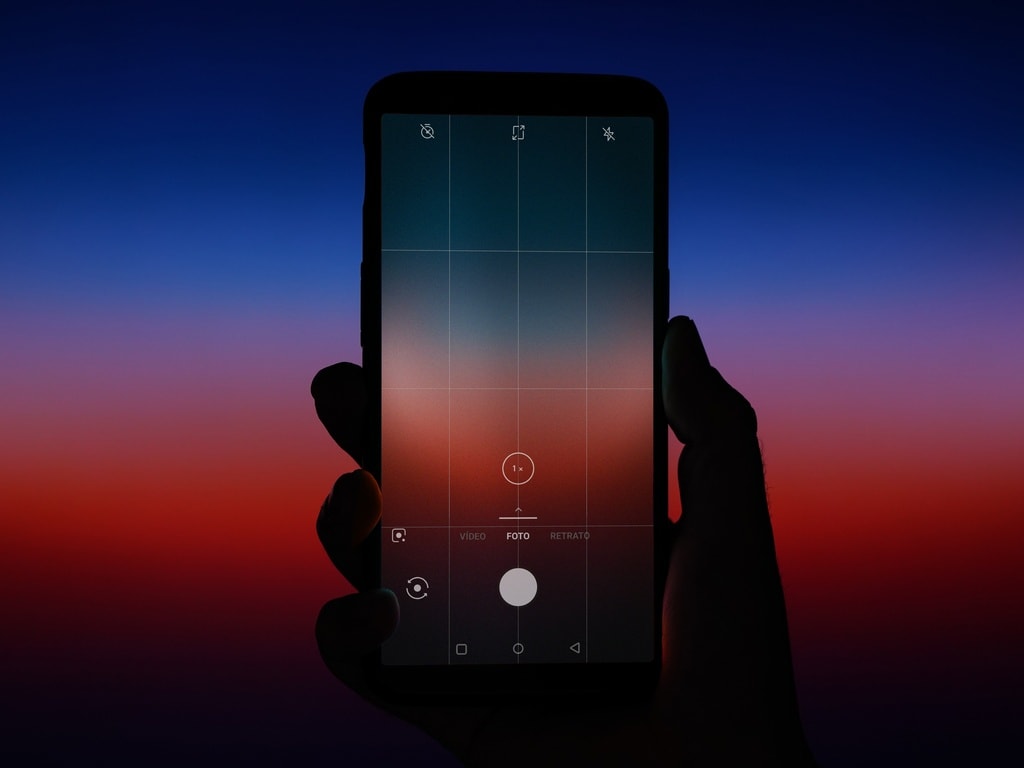
Representational image. Photo by Kote Puerto on Unsplash
So, after reviewing dozens of smartphones over the years, I think I’m finally in a position to explain most of the camera lingo doing the rounds in 2019, and to help you understand what really matters.
Whether you end up using this knowledge for bragging rights or just giving out gyaan to your friends, family and interested office colleagues, it’s always good to know what camera gear is packed into your smartphone, and more importantly, why it’s really there!
Dual camera, triple camera or quad camera?
We went from single-camera smartphones to dual, then triple, now quad in a span of eight years (dual-camera smartphones went mainstream from 2016). Nokia even came up with the 9 PureView that featured 5 cameras (if you don’t include the ToF camera, which would be the 6th) and is already looking to release an updated model in the coming months.
There’s plenty of choice when it comes to single, dual and triple-camera smartphones. Image: tech2/ Omkar Patne
The Google Pixel 3 manages to pull off what are some of the best (or at least, Instagram-worthy) photographs from a smartphone using just one rear camera. But at the same time, the Huawei P30 Pro with its monstrous rear quad camera setup is also equally capable and can even shoot pictures of the moon at around 50x zoom while being able to shoot macro photographs of bugs from as close as 2.5 cms.
Do I need more than one camera?
In day-to-day scenarios and for the casual shooter a smartphone with a dual-camera will do just fine. I say dual because of the Portrait mode. The typical dual camera setup usually consists of a primary camera and a second camera (usually 2 MP – 5 MP) just to help out the main camera when it comes to those bokelicious photos everyone loves. It’s rare that a dual smartphone will be accompanied by a telephoto lens (the one that at least gets you up to 2X zoom).
Another reason to go with dual cameras is that smartphones from most manufacturers (read Chinese) are still a lot more affordable than the single-camera Pixel 3 (roughly Rs 49,999) or a Pixel 3a (approximately Rs 39,999) from Google. Obviously, the quality differs! That’s what you pay all that extra money for.
What can I do with a triple camera?
For smartphone photography enthusiasts, three cameras (or four) will always be better than two. A triple camera setup usually consists of a primary sensor (with autofocus, OIS and all the nice bits), a telephoto lens (for zoom) and an ultra-wide-angle lens (for panorama shots).

The Huawei P30 Pro with its quad-camera setup will make you forget your DSLR on your next vacation. Image: Omkar Godambe
The fourth camera is usually the ToF sensor (more on that later). And this usually comes in handy when you are on vacation. As explained in my Huawei P30 Pro review, there’s one lens for every occasion. The telephoto lens can get you closer to the action on a safari or at a zoo, while an ultra-wide-angle camera is usually a better choice than using the Panorama mode because you can squeeze in so much more into a smaller frame (just don’t use this for people).
Smartphones that feature a dual camera
Pretty much everything you can buy, from a budget smartphone to infinity (and beyond).
Smartphones that feature a triple camera
Everything from the budget smartphone range (Rs 12,999) till the premium (Rs 35,000) and ultra-premium (up to Rs 85,000 and over).
ToF Camera
While Time-of-flight (ToF) camera technology has only recently started to show up on smartphones, it has seen broader applications in self-driving cars, drones and other computer vision applications for over a decade.
The camera technology uses infrared light that is invisible to human eyes to gather depth data in a manner similar to how a bat uses sound to gather information from its surroundings, avoiding bumping into objects while flying.
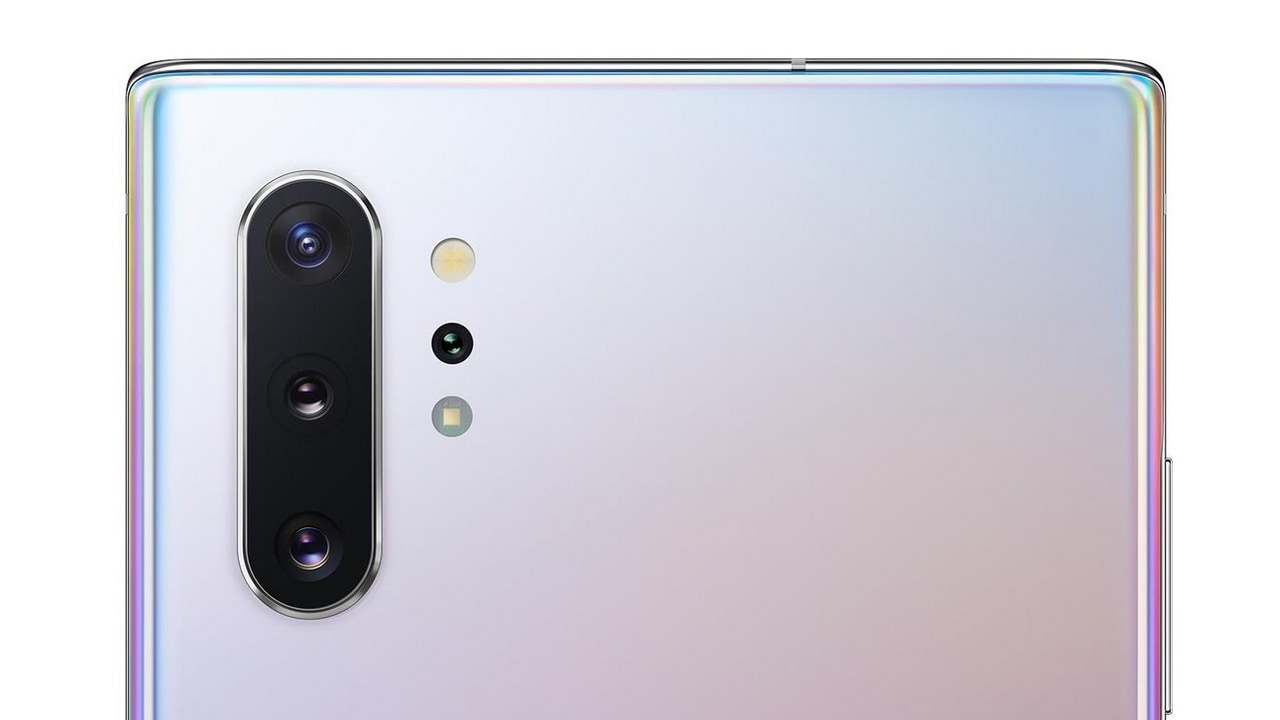
The Samsung Galaxy Note 10 Plus’s rear camera setup adds a ToF camera for better portrait images. Image: Twitter/Ishan Agarwal
How it works
The time of flight sensor setup consists of an infrared light emitter and a sensor that receives the infrared light signals.
The system gathers depth data by emitting light signals, which hit your favourite Instagram subject/object (friend/dog/cat/coffee cup), and then return to the sensor. The time taken for the light signals to return is then calculated by the software behind the hardware, which then generates a depth map of the area in front of the camera.
Why does a smartphone need one?
Since they are quite cheap to manufacture and utilise little processing power, they make perfect sense for manufacturers to include in their camera setups, which are often used to deliver better bokeh images (using the Portrait mode) or for AR applications like 3D scanning objects or measuring real-world objects.
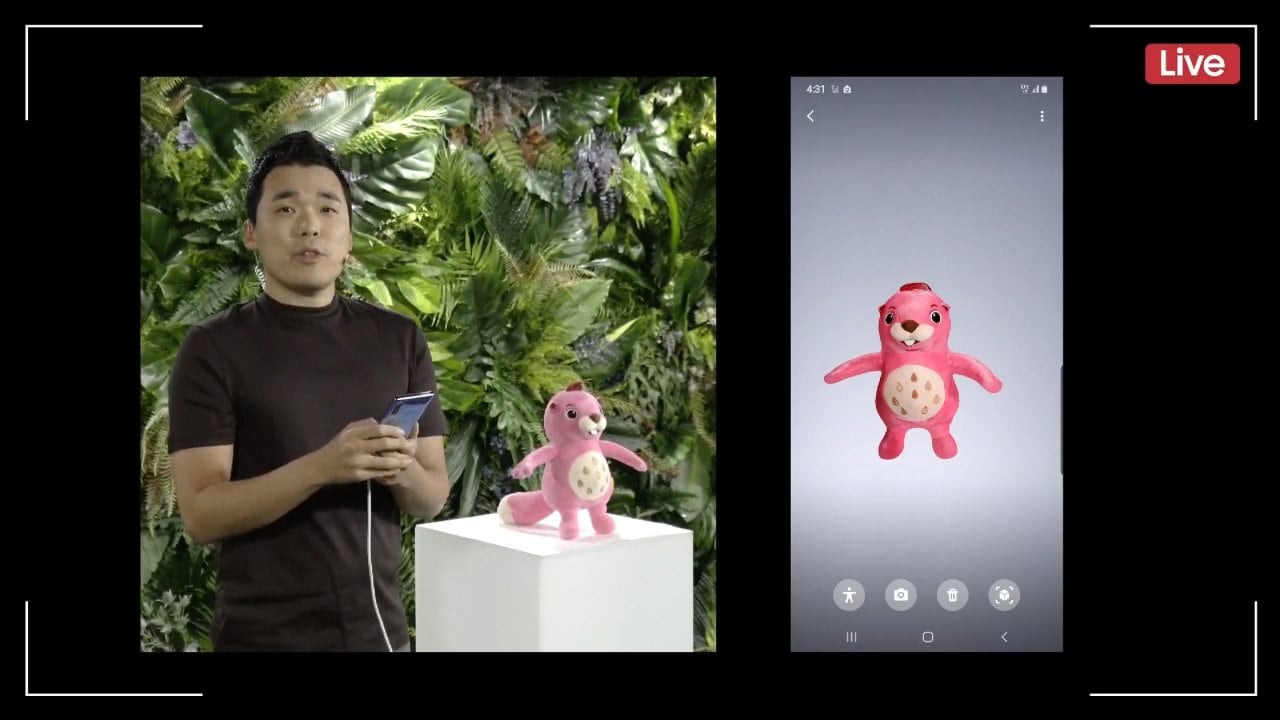
3D scanning on the Samsung Galaxy Note 10 Plus using the Depth Vision (ToF) camera. Image: Samsung.
While a standard dual or triple camera smartphone measures the depth by using data gathered from two lenses, these aren’t usually quite accurate in low light or dark shooting scenarios. Since ToF systems do not need visible light, they are quite capable of not just getting depth data but also helping cameras focus in extreme low light scenarios.
Smartphones that feature ToF cameras in India
Honor View 20
Huawei P30 Pro
Oppo R17 Pro (not used for shooting photos yet)
Samsung Galaxy Note 10 Plus
Pixel Binning
Wait, what is a pixel?
To understand the concept of pixel binning we first need to know what a pixel is. Pixels are basically physical elements on a camera’s sensor (also called photosites) that capture light when activated or when clicking photos. All a pixel records is the intensity of light that hits it. It’s the smallest structural element of a digital photograph.
The bigger the pixel, the more is the amount of light you can capture. More light means better photographs with more details in low light. Bigger pixels also need more space to be spread out on a sensor. Unfortunately, on a smartphone, space is at a premium and most smartphone sensors are really tiny even in comparison to those available in point and shoot cameras (let alone DSLRs and medium format cameras). For real-world reference, most smartphone camera sensors are usually 25 percent the size of an average fingernail. Yes. They are that small and crunching down all these photo sites into something this tiny makes it harder to get better details because the pixels end up as microscopic specs.
To put it another way, a 12 MP DSLR sensor will have pixels that are 8-10 times the size of the pixels on a 12 MP smartphone camera sensor. While the resolution is the same, the DSLR will capture more light, and hence, brighter, sharper, less noisy images.
What is pixel binning and does it help?
Simply put, pixel binning is a process where a sensor combines the light data coming from multiple pixels into one. Current smartphones are combining four pixels into one.
This means that instead of gathering lesser light from one tiny pixel, the sensor can now “theoretically” gather more light from four nearby pixels and consider them one large pixel instead. And this method will work in your favour until those pixels get too tiny for comfort.
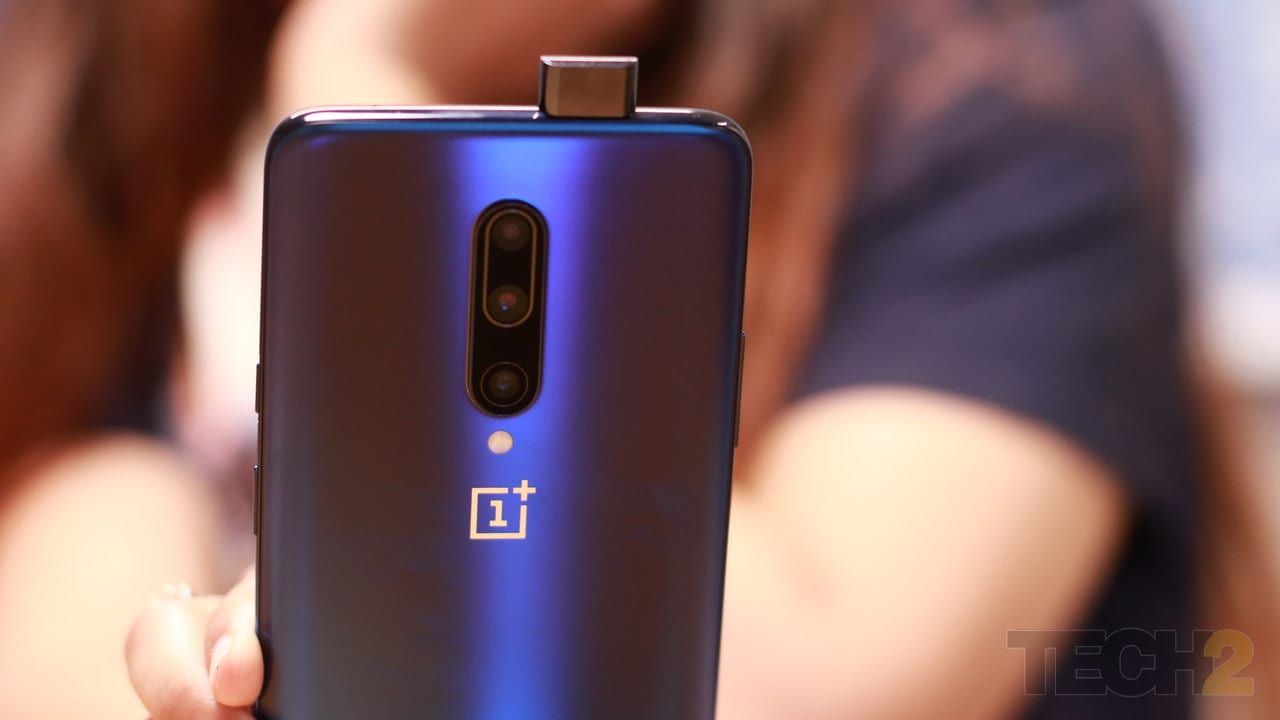
The OnePlus 7 Pro’s rear camera also uses pixel binning. Image: tech2/ Prannoy Palav
While 48 MP smartphone camera sensors work well and deliver crystal clear 12 MP images with good detail, it’s a bit of a debate about the benefits 100 MP sensor can bring when its spread across the same footprint of a 48 MP sensor (that’s a hundred million photo sites crammed into a tiny space). Indeed, it’s all down to the manufacturer and the processing algorithms that will deliver a better image.
Google’s Pixel 3 is a shining example of software and AI can be used to get more data out of smaller sensors, and of how to process images in a way that does not keep the chipset too busy that it has a negative effect on battery life. Interestingly, Google has not switched to bigger sensors and pixel binning just yet.
Smartphones that feature pixel binning in India
Redmi Note 7 Pro
Honor View 20
Huawei P30 Pro
Xiaomi Mi A3
Redmi K20 Pro
OnePlus 7
OnePlus 7 Pro
Super Resolution Zoom
Conventional digital zoom on most entry, budget and mid-range smartphones uses data coming from a cropped area of the camera’s sensor that ends up bringing the subject closer. In more technical terms, you’re narrowing the field of view by decreasing the image capture area. This increases zoom level while reducing resolution.
Of course, this delivers an image with lesser detail as it would have a tiny area of the sensor to deliver a full-sized image. While this would, in theory, work better on a larger sensor, it really isn’t useful on a smartphone’s sensor that is barely half a centimetre wide. And many manufacturers have been following this technique in recent years to bring subjects closer albeit at the cost of losing details, which has ruined its purpose as a feature for long.
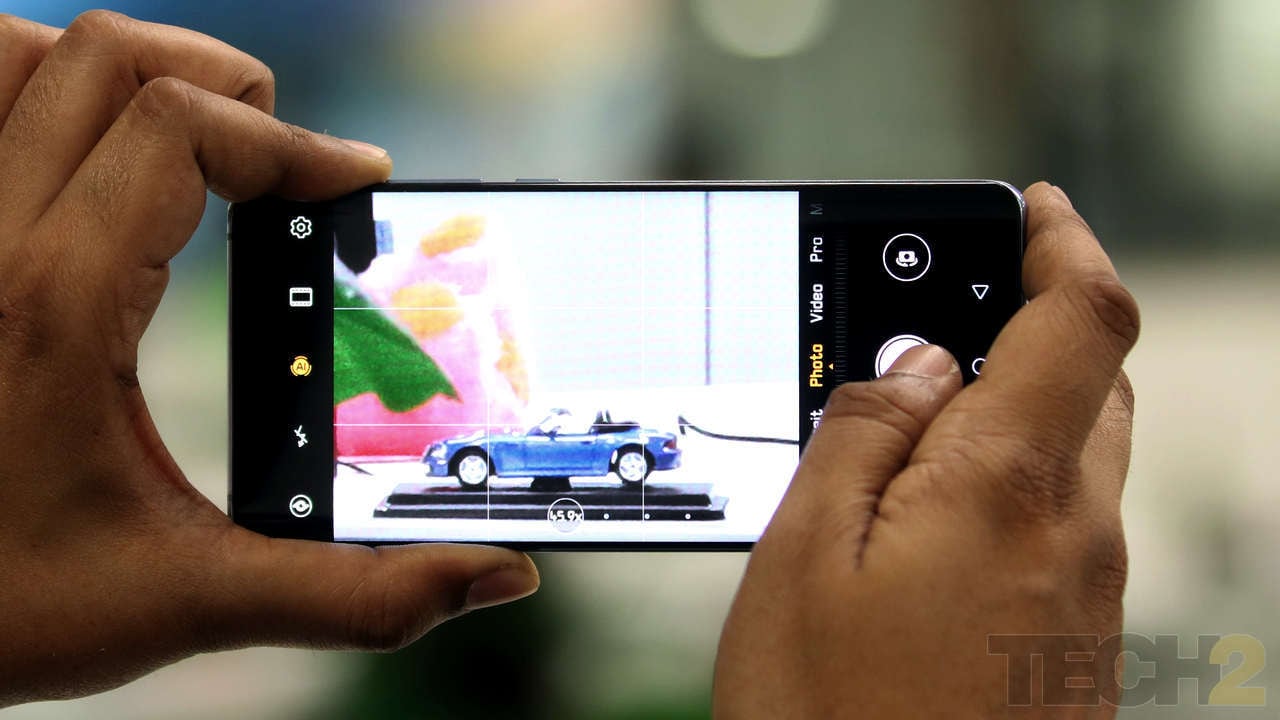
The Huawei P30 Pro is the current ‘Zoom King’. Image: Omkar Godambe
Of course, some did go the optical way and stack up a bunch of lenses like the old Nokia N90, the Asus Zenfone Zoom and more recently, the Huawei P30 Pro and the Oppo Reno 10x Zoom. But this solution also makes the smartphone heavy and bulky.
Google with its Pixel 3 pretty much changed the game when it was launched and added a new feature branded as Super Res Zoom.
Why Super Resolution Zoom is awesome
All you need to know as a smartphone buyer is that the process shoots a burst of images and then combines the best parts of each image, applies a bit of AI and delivers a clearer image using nothing but software and processing.
Since our hands cannot be as steady as a tripod, Google’s camera shoots a burst and gathers several photos (that are slightly different from the next) thanks to the minor hand tremor. It then combines these photos and adds a bit of colour to match those of the base image.
Here are some more Super Res Zoom samples shot on the @GoogleIndia #Pixel3XL. What do you think? pic.twitter.com/9F1Ip52VrZ
— Tech2 (@tech2eets) October 15, 2018
What if you have a tripod? Well, Google’s camera app is so crazy, that it will intentionally jiggle the OIS (optical image stabilisation) system a bit to get those minor difference just so that it can realign and combine them again to get a clearer photograph!
These low light zoom samples taken from the #HuaweiP30Pro look really impressive. (1X, 10X, 20X, 50X) pic.twitter.com/mR2xOSBO2n
— Tech2 (@tech2eets) April 5, 2019
The zoom capabilities of the @HuaweiIndia #HuaweiP30Pro are quite impressive. Here going from Ultra wide to 1X to 5X and 10X. pic.twitter.com/Uh1JbKF4Xf
— Tech2 (@tech2eets) April 4, 2019
Huawei’s P30 Pro also took things to the next level by delivering a capable 50X digital zoom. I mean you can actually shoot pictures of the moon with minor handheld stabilisation.
Yes, we really cannot wait to see what the Pixel 4 will be capable of.
Smartphones that feature Super Res Zoom in India
Google Pixel 3
Google Pixel 3 XL
Huawei P30 Pro
Night Mode
The night photography mode that is making its way into budget, mid-range and premium smartphones has been in the works for almost a decade.
The objective of a ‘night mode’ is to deliver better low light photos that the auto mode on most smartphones simply cannot pull off thanks to the limited amount of time it has to deliver a photo in.
Yes, night modes on most smartphones are not fast, usually taking between 2-5 seconds to click a low light photograph, one that also takes an additional 2 seconds to process solely because of the number of frames it has to process to gather more details from the limited amount of light available in the scene.
Why the Pixel’s Night Sight is better
Since we as human beings are always running short of time, brands like OnePlus came up with a branded ‘Nightscape’ mode that takes a lot less time (1-2 seconds instead of 2-5 or even 7 seconds). Still, since both time and light come at a premium in low light scenarios, the results are not as detailed or colour accurate as the ones from a Pixel 3 (just yet).
Google with the Pixel 3 took things to the next level. The process, similar to super resolution zoom, uses a base image for reference and then takes the best bits of the other frames to deliver a clearer looking image and retain the details. Google did something new by adding machine learning to the mix, that lets the Pixel shoot better colours based on the content in the scene.

L to R: iPhone XR, Pixel 3 XL, Mate 20 Pro, Galaxy S10 Plus. The Pixel 3 XL delivers the clearest image with accurate colours. Image: Tech2/ Sheldon Pinto
Huawei’s Night Mode (P20 Pro onwards) offers something slightly better than the Pixel in the sense that it gives you a preview of the scene as it is being generated. With the Pixel 3 (and the Pixel 2) you really have no clue as to what your photograph will turn out to be. Thankfully, most of the time, images are spot on.
Smartphones that feature a dedicated night mode in India
Google Pixel 2
Google Pixel 2 XL
Google Pixel 3
Google Pixel 3 XL
Huawei P20 Pro
Huawei Mate 20 Pro
Huawei P30 Pro
Honor View 20
OnePlus 6T
OnePlus 7
OnePlus 7 Pro
Dual Aperture
Samsung was the first brand to introduce cameras with a dual aperture system on smartphones. The first phone to feature it was the W2018 a folding clamshell smartphone from Samsung. Since then, the tech has made its way into all of Samsung’s flagships, including the Galaxy S9 series, Galaxy Note 9 and this year’s Galaxy S10 series and the Galaxy Note 10.
What is aperture?
Starting with the basics, the aperture is basically the size of the opening in your lens that allows light to enter the camera. The larger the aperture relative to the focal length of the lens, the more the light gathering capacity and the brighter and less noisy your image. As a rule of thumb, a larger aperture also means a shallower depth of field (better bokeh). A smaller aperture is usually sharper, but it lets in less light, making it less useful in low light. Aperture is represented as f/ of F. The smaller the number, the larger the aperture. Eg. f/1.8 or F1.8 is a larger aperture than f/4.5 or F4.5.
It works in a manner similar to the pupils of a human eye letting in precisely the right amount of light. It’s just that in an eye, the aperture is defined by the amount of light around us. On a camera, a photographer is able to control this element and this lets him/her place the focus on the right object (or subject) giving us a sense of depth in the photograph.
In a smartphone, you don’t get to control the aperture. There are two reasons for this. First, the camera system is so small that a variable aperture is too complicated to implement. Second, a smartphone camera is already struggling for light and it’s usually best to go with the largest aperture available.
Samsung, so far, appears to be the only company to have a dual-aperture system in a production smartphone.
As explained in a more detailed article on the topic, by my colleague, the current system will allow more light into a smartphone camera leading to brighter images. But they may not turn out to be as sharp as we expected them to be.
What is a dual aperture system?
The dual aperture system by Samsung aims to solve this problem. Yes, I said “aims to”.
Samsung basically adds two concentric aperture rings that shift in and out over the lens setup, similar to the way an optometrist changes the lens on that gigantic obnoxious-looking set of glasses also called the optical trial lens frame.
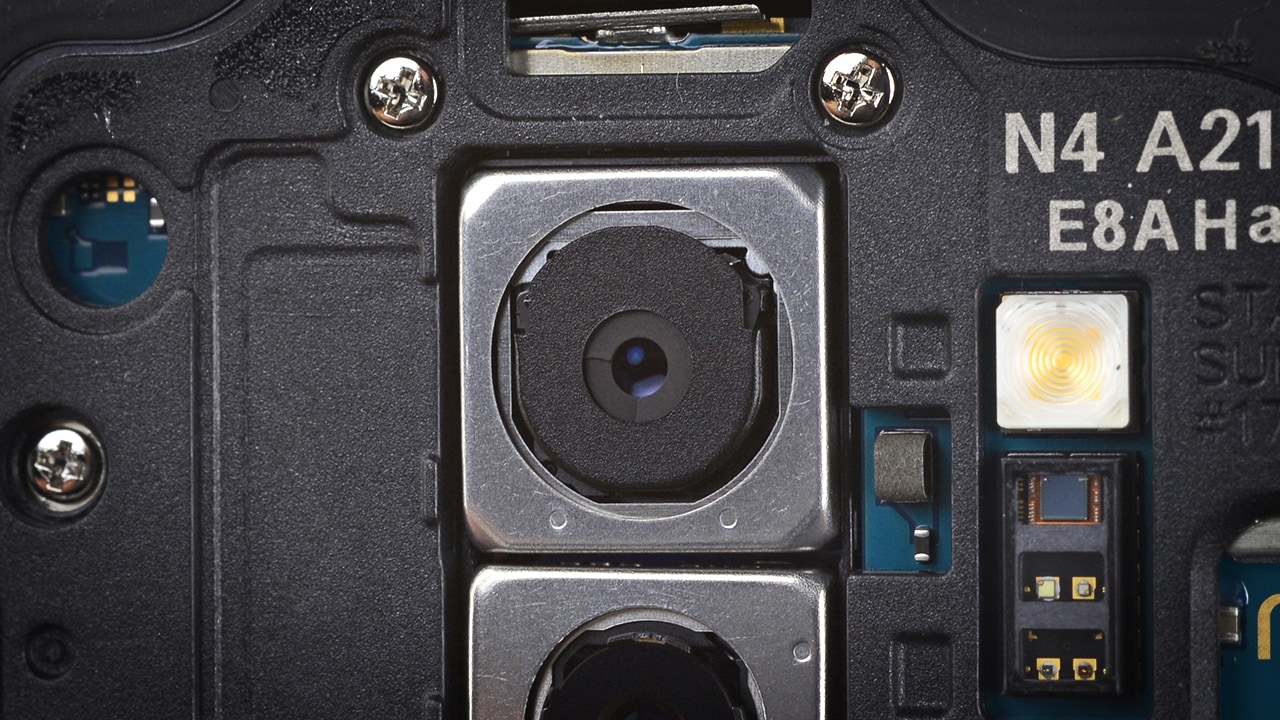
The f/2.4 aperture is achieved by placing two rings around the lens. Image: iFixit
In auto mode, the camera software will automatically decide (according to a preset by Samsung engineers) which aperture ring needs to kick in and when it needs to do it, this should lead to sharper photos, in theory.
The lens will open to a wider aperture (f/1.5) in a dark room (below 100 lux) to let in more light, and a smaller aperture (f/2.4) in bright environments like on a beach on a sunny day.
The problem with this micro setup is that the sensor is already too tiny to begin with, which means that you really won’t see better or sharper images thanks to the dual aperture system. Things kind of get worse in situations with mixed lighting, where the camera may force a smaller aperture in what actually is a low light setting with bright lights, which leads to slightly noisy and slightly blurry images. Mind you, these are not bad, they’re just not what we had expected.
Bottom-line is, that Samsung is persistent, which should hopefully translate to better photos as the technology is improved.
Smartphones that feature a dual aperture system in India
Samsung Galaxy S9
Samsung Galaxy S9 Plus
Samsung Galaxy Note 9
Samsung Galaxy S10e
Samsung Galaxy S10
Samsung Galaxy S10 Plus
Samsung Galaxy Note 10
Samsung Galaxy Fold
Oppo R17 Pro
Hole-punch selfie camera
A hole-punch selfie camera is essentially a camera that fits and works inside the working area of a display. The technology came about as an alternative to the more radical (and not so practical) motorised pop-up camera. I say “not so practical” because the motorised mechanism is just another entry point for water and dust to enter your smartphone, which also ensures that they can never get an IP rating (read OnePlus 7 Pro).
Technically, the hole punch is more about the display than it is for the camera, as almost any camera can be retrofitted in here provided a large enough cavity can be created to make way for light to reach the lens. So yes, it is a hole-punch display and not really a hole-punch camera as some people call it.
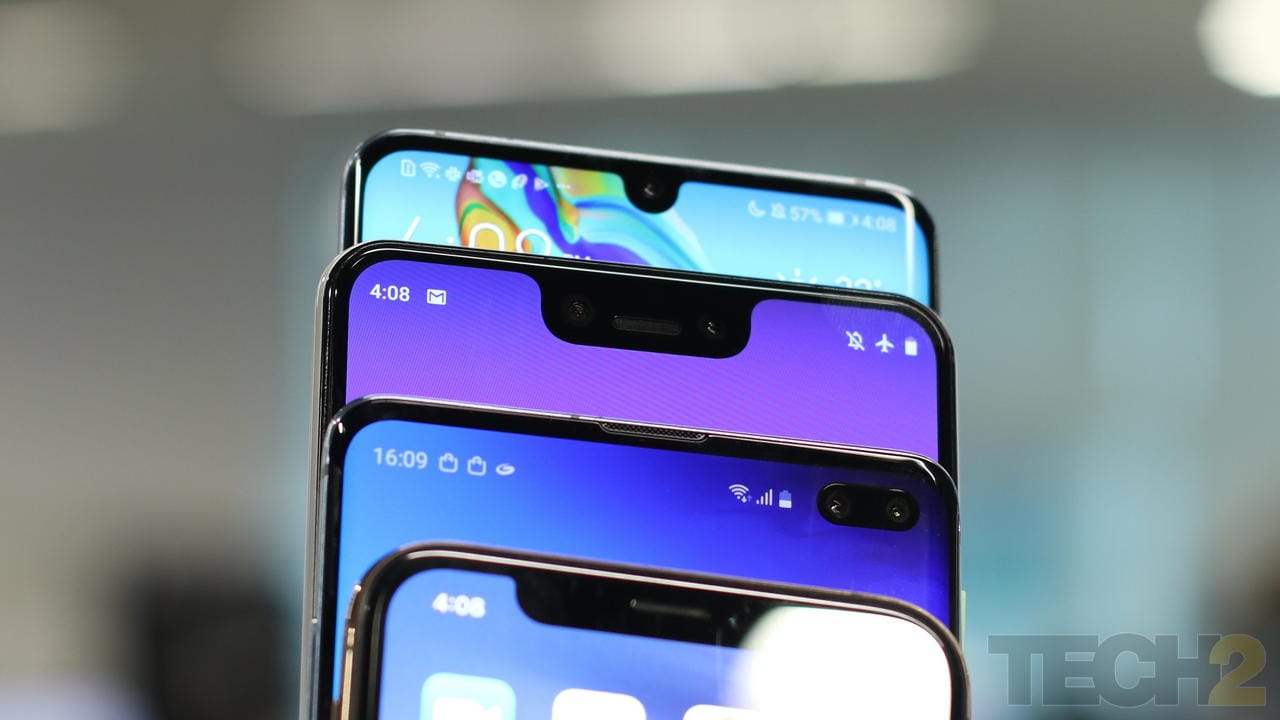
The Samsung Galaxy S10 Plus uses a hole-punch display with a dual-camera setup (second from bottom). Image: Omkar Godambe
There’s still plenty of engineering that goes into what appears to be just a hole in a smartphone’s display.
How Samsung does it
Samsung takes the barrel approach where it provides a chamber for the light to pass through the display and reach in the lens of the camera inside the barrel or beneath the layers of the display. This is the reason why you will find a thick border around the camera hole in the display, because the light from the display cannot be allowed to enter or interfere with the light hitting the lens of the camera.
Why Honor’s approach has more benefits
Honor’s approach is a whole lot different and has its benefits over Samsung’s smartphones.
As explained in detail in my Honor View 20 review, the approach is quite intricate. Honor technically does not have a hole or a barrel to allow light to reach the camera setup below the display. It instead uses a bunch of black rings across the layers of the display just above the camera’s light path to prevent light from the display to enter the visual chamber and ruin the image. Basically, don’t make a hole through the glass, but just make the layers around the hole transparent.
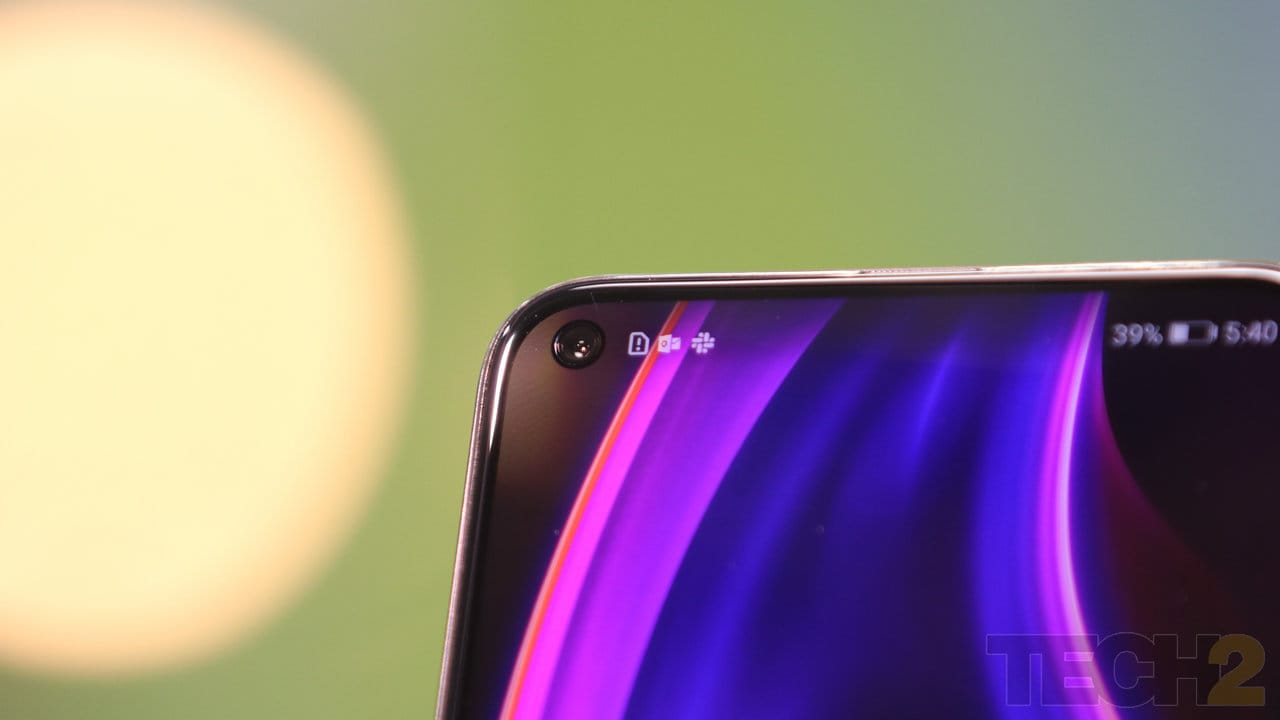
The Honor View 20’s hole-punch display has a cavity that almost fits into the notifications bar alongside the status icons. Image: tech2/Omkar Patne
And this process has its benefits, Honor’s hole-punch cavity is not as big as Samsung’s so it interferes less when viewing movies or playing games. Honor’s approach also maintains the integrity of the display (because there is no real hole) reducing display damage when a phone drops.
Smartphones that feature a hole-punch camera/display in India
Honor View 20
Honor 20
Honor 20 Pro
Samsung Galaxy S10e
Samsung Galaxy S10
Samsung Galaxy S10 Plus
Samsung Galaxy Note 10
Samsung Galaxy Note 10 Plus
Samsung Galaxy M40
Motorola One Vision
Motorola One Action
Vivo Z1 Pro
This article will be continuously updated when new smartphone camera tech emerges on to the scene and goes mainstream. I’d recommend bookmarking this page for future reference and have a look-see whenever you plan on making a smartphone purchase.
Find our entire collection of stories, in-depth analysis, live updates, videos & more on Chandrayaan 2 Moon Mission on our dedicated #Chandrayaan2TheMoon domain.
Post a Comment